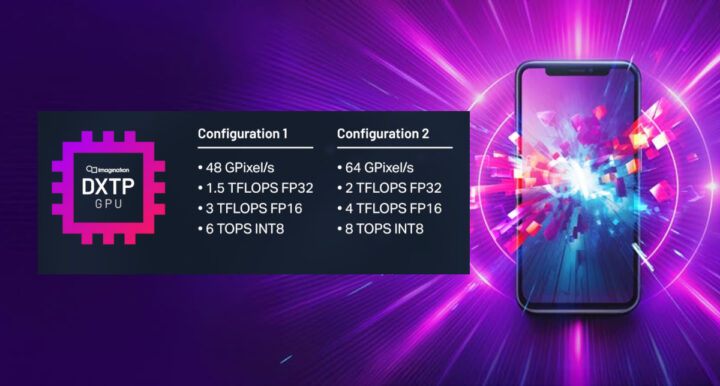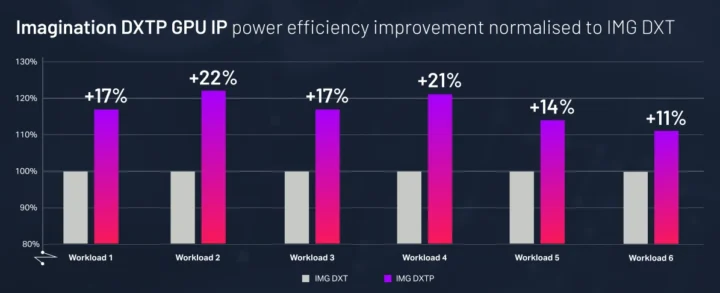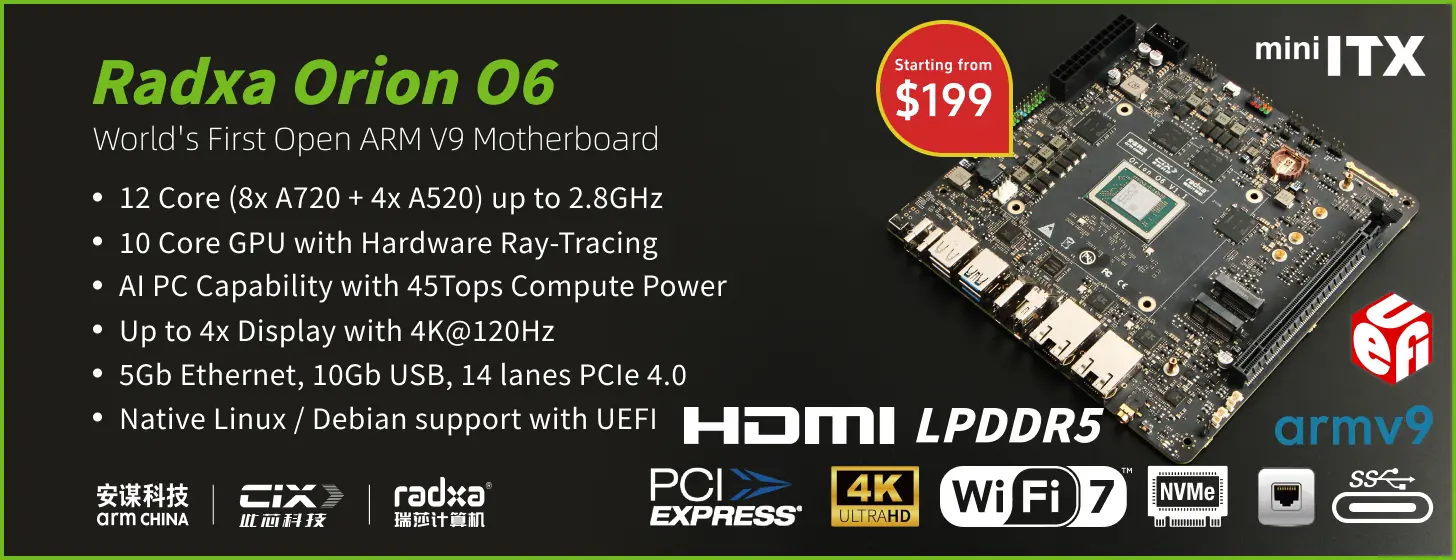Imagination has announced the DXTP GPU for mobile and power-constrained devices with up to 20% greater power efficiency than its predecessor, the D-Series DXT GPU for longer battery life for AI applications or complex games.
The company says the GPU is suitable for gaming, user interfaces, graphics-rich applications, computer vision, generative AI, and other AI applications designed to run on smartphones, tablets, laptops, desktops, or non-safety automotive products.
Imagination DXTP highlights:
- Two off-the-shelf configurations:
- DXTP-48-1536
- 48 GPixel/s
- 1.5 TFLOPS FP32 (1536 FLOPs/Clock)
- 3 TFLOPS FP16
- 6 TOPS INT8
- 48 ppc Bilinear 3D Textured
- Up to 96 ppc 2D Dual Rate Mode
- DXTP-64-2048
- 64 GPixel/s
- 2 TFLOPS FP32 (2048 FLOPs/Clock)
- 4 TFLOPS FP16
- 8 TOPS INT8
- 64 ppc Bilinear 3D Textured
- Up to 128 ppc 2D Dual Rate Mode
- DXTP-48-1536
- Bus Interface – AXI, ACE-Lite
- Compression
- PVRIC5 Lossless and Lossy Framebuffer Compression
- ETC and ASTC LDR and HDR Support
- Microarchitecture improvement – DXTP delivers higher sustained performance, faster compute scheduling, and 50% more geometry throughput compared to the DXT, as well as higher energy efficiency than DXT thanks to microarchitectural improvements that boost FPS/W by up to 20% on “popular graphics workloads”.
- New features – Hardware-based virtualization for fully secure GPU multitasking, asynchronous compute for the simultaneous processing of graphics and compute workloads and
a frame buffer compression solution that allows for bandwidth reduction without compromising display quality. - Compute Software – Optimized OpenCL compute libraries (imgNN, imgFFT, imgBLAS) enable up to 4x better performance for AI applications compared to open-source offerings. Reference kits for oneAPI and TensorGraph are also provided, as well as optimized LiteRT support for high-performance AI on Android.
- Supported OS and API – Linux and Android with support for OpenGL ES 3.2, OpenCL 3.0 FP, and Vulkan 1.4. OpenGL 4.6 is supported via Zink
Imagination shared some power-efficiency numbers comparing DXTP and DXT GPUs, but it’s not super useful as they decided to keep the workloads used confidential… likely a lawyer’s idea…
I suspect it’s a combination of games and AI-powered applications… At least the company is already working on chips based on the DXTP GPU:
Zelos is integrating the advanced, power-efficient compute ofImagination DXTP into our upcoming chip. Imagination’s GPUs combine the performance of ultra-parallel processing with the flexibility that comes from a highly programmable architecture, making them the ideal platform for accelerating our AI models.
Here, Zelos is not the watchmaking company, but Zelos Technology which specializes in autonomous vehicles. A few more details may be found on the product page, and there’s also a webinar on March 5 if you want to learn more.

Jean-Luc started CNX Software in 2010 as a part-time endeavor, before quitting his job as a software engineering manager, and starting to write daily news, and reviews full time later in 2011.
Support CNX Software! Donate via cryptocurrencies, become a Patron on Patreon, or purchase goods on Amazon or Aliexpress







> Imagination shared some power-efficient numbers comparing DXTP and DXT GPUs, but it’s not super useful as they decided to keep the workloads used confidential… likely a lawyer’s idea…
I’m guessing they’re keeping test specs in the wraps since the new Android hard requirement for VM hardware (which is reflected in the specs here) is introducing new SoCs in multiple different price tiers and moved around first quarter launch schedules all over the industry. So, telling people their GPUs are embedded in this or that SoC or even hinting on the loads in question will leak their clients’ or their clients’ clients product release dates to some extent.